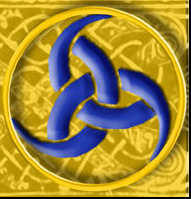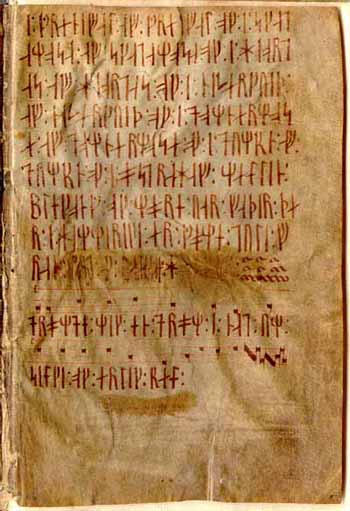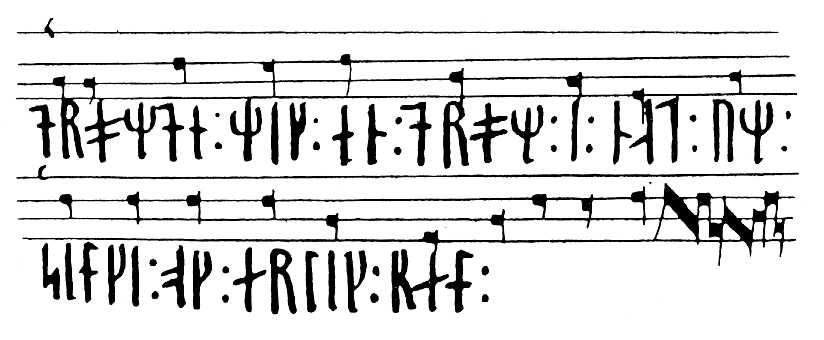
Terms of
Use
Submissions
~ Historical info ~
Music, instruments & scales of the Old North
What info do we have? Unfortunately, not much! There's no written
music passed down to us from those times.
I highly recommend the Viking Answer Lady´s excellent article on
Viking
Age Music,
and also this article on
Viking Age Music on Hurstwic.org .
Ben Waggoner & I have compiled this info:
The earliest
sheet music from Scandinavia is a Denish song called "Drømte mik en drøm" ("I dreamed
a dream").
These are arguably the first two lines of a ballad or folksong. It was found on
the last leaf of the 13th cent.
Codex runicus, written in the same hand as the text on the preceding eight
leaves, but otherwise with no obvious
connection to it. The date of notation is a little post-Viking. It seems to be notated in
A minor, but the range is only
ABCDE. The lines read:
"Drømte mik en drøm i nat um silki ok ærlik pæl..."
Drømte mik MP3 (sung)
"I dreamt me a dream last night of silk and noble fur..."
Drømte mik WAV (instrumental)


Written in runes and using the early medieval form
of music notation, it is believed to be older than the manuscript itself. The
little sign on the top left marks the c` note. The tune is known to every Dane,
having been used as the interval signal on Danmarks Radio for over half a
century.
A text by someone named Hucbald suggests that the Anglo-Saxon and Germanic
six-string lyre,
or hearpe,
was tuned to CDEFGA, which could be called F
pentatonic with an added E.
Read more on
Bragod: Robert Evans on tuning the lyre and crwth.
A
Viking-era panpipe from
10th century York, England was found, with five pipes;
there may
have been more once, but the set was broken.
The surviving pipes were tuned to
ABCDE.
Apparently a
seven-pipe set turned up at Alesia, France, tuned to
DEF#GABC (D Mixolydian);
that's Roman-era (2nd-3rd century), but maybe some Germanic people played it.
A bone flute turned up from 13th-century Denmark; if the recording I've heard of
a replica is accurate,
it could play in D minor. There's a 13th-century hymn
from the Orkneys written in Lydian mode in parallel thirds,
which is suspected
to reflect Viking-era music.
And finally, a French gent named Jean-Benjamin de
la Borde
recorded an
Icelandic melody in 1780,
to which people were still
singing verses from the Poetic Edda.
If I'm reading the music right -- and I may
not be;
it's written using a clef I'm not familiar with -- it's notated in F major, but
the range is only EFGA.
*****************************************************
Do you have further information, sources, or suggestions?
Let us know!
b/w "Dromte mig" score from Wikipedia, public domain.